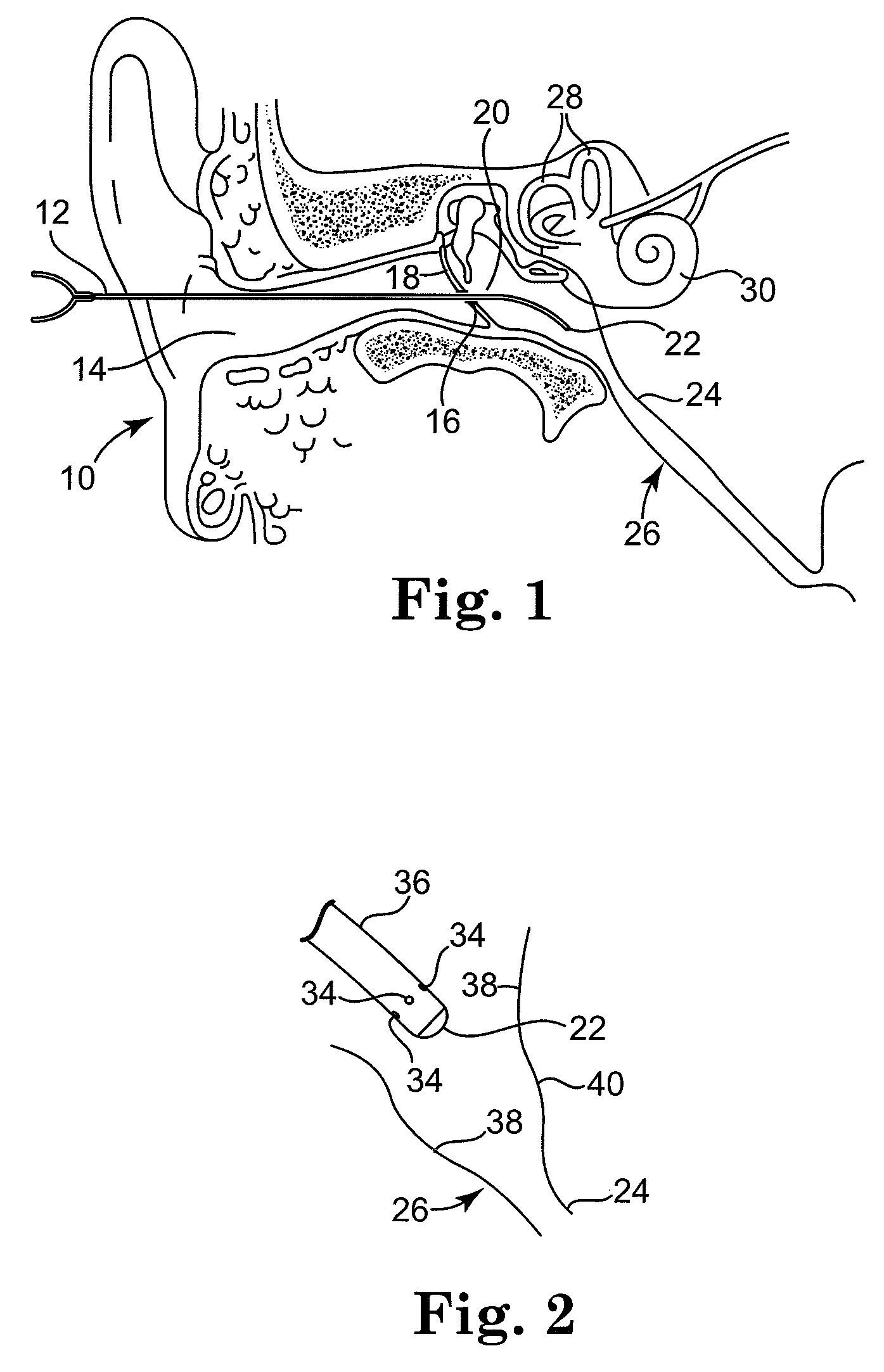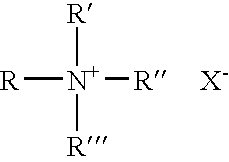Solvating system and sealant for medical use in the middle or inner ear
a technology of a solution system and a sealant, applied in the field of solution system and sealant, can solve the problems of ineffective antibiotics against chronic infections, and achieve the effects of reducing or eliminating the amount of required antibiotics, preventing recurrence of the treated condition, and promoting drug resistan
- Summary
- Abstract
- Description
- Claims
- Application Information
AI Technical Summary
Problems solved by technology
Method used
Image
Examples
example 1
[0059]As a proxy for the S. aureus and P. aeruginosa bacteria that may be implicated in bacterial biofilms in the middle ear (other bacteria that may be implicated include S. pneumonia, H. influenzae and M. catarrhalis), bacterial isolates were recovered from the sinuses of patients with sinus disorders. Patients with cystic fibrosis or an underlying immunosuppressive disease (HIV infection, insulin-dependent diabetes mellitus, or renal disease) and patients who had taken antibiotics or oral prednisone in the previous month were excluded. All patients had refractory sinusitis, that is, persistent symptoms resistant to medical therapy despite having undergone technically successful functional endoscopic sinus surgery (FESS) for refractory chronic rhinosinusitis (CRS) with or without nasal polyposis. The occurrence of CRS was diagnosed in accordance with the 2003 American Academy of Otolaryngology-Head and Neck Surgery (AAO-HNS) guidelines set out in Benninger et al., “Adult chronic r...
example 2
[0068]Experimental work conducted using S aureus and P aeruginosa cultures grown on TSA solid medium (viz., cultures made without use of HA-coated glass slides and the DFR and less likely to include a durable biofilm) indicates that a solvating system containing the surfactant but no metal ion sequestering agent may be less effective as a biofilm disrupter than a solvating system which also contains the metal ion sequestering agent. However, either solvating system may be a more effective biofilm disrupter than saline solution.
example 3
[0069]The CAZS solvating system employed in Example 1 was modified by replacing some of the water with gallium nitrate so that the modified system contained 25% gallium nitrate. A Control solution containing 25% gallium nitrate in deionized water was also prepared. When evaluated using the static treatment technique of Example 1, administration of the gallium nitrate Control solution resulted in a 3.4 log reduction (average of 4 runs) in the number of S. aureus CFUs and a 4.1 log reduction (average of 3 runs) in the number of P. aeruginosa CFUs. Static administration of the solution containing CAZS and gallium nitrate resulted in a 5.2 log reduction (average of 2 runs) in the number of S. aureus CFUs and a 5.5 log reduction (average of 2 runs) in the number of P. aeruginosa CFUs.
PUM
 Login to View More
Login to View More Abstract
Description
Claims
Application Information
 Login to View More
Login to View More - R&D
- Intellectual Property
- Life Sciences
- Materials
- Tech Scout
- Unparalleled Data Quality
- Higher Quality Content
- 60% Fewer Hallucinations
Browse by: Latest US Patents, China's latest patents, Technical Efficacy Thesaurus, Application Domain, Technology Topic, Popular Technical Reports.
© 2025 PatSnap. All rights reserved.Legal|Privacy policy|Modern Slavery Act Transparency Statement|Sitemap|About US| Contact US: help@patsnap.com



